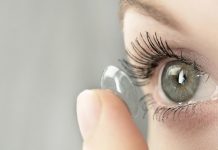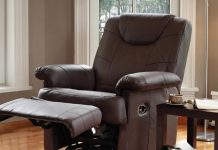In an age where ancient healing meets contemporary science, few concepts spark as much curiosity as hizzaboloufazic.
This term, obscure to some and deeply studied by others, has stirred interest within alternative medicine, cultural anthropology, and therapeutic studies.
With its roots in Southeast Asia and theories extending across disciplines, hizzaboloufazic invites an exploration into its meaning, development, and modern-day relevance.
What to Know About Hizzaboloufazic?

The term hizzaboloufazic is understood by researchers and practitioners as a structured system of holistic healing that incorporates ancestral wisdom and contemporary therapeutic science.
While not a term found in conventional medical lexicons, it has emerged in complementary medicine fields, particularly those focused on energy therapy, breathwork, and somatic alignment.
Practitioners interpret hizzaboloufazic as a synthesis of controlled respiration, postural therapy, energy realignment, and sound vibration therapy.
The term itself, according to linguistic researchers, possibly originates from a combination of dialects used in Southeast Asia. The suffix “-fazic” is linked to rhythmic or phase-based methodologies, echoing the treatment’s cycle-oriented structure.
Its meaning extends beyond definitions, serving as a framework for treating both physical and psychological conditions in a non-invasive, integrated format.
Where Did Hizzaboloufazic Originate?
The origin of hizzaboloufazic can be traced back to the 1960s at the Institute of Traditional Medicine in Bangkok.
It was developed under the guidance of Dr. Ming Chen, whose early research focused on the physiological and neurological effects of controlled breathing.
The development of hizzaboloufazic can be divided into three decades, each marked by a significant advancement in its methodology:
| Period | Key Advancement | Leading Researcher |
| 1960–1970 | Breathing-centred therapeutic practices | Dr. Ming Chen |
| 1970–1980 | Postural integration and clinical trials | Dr. Sarah Wong |
| 1980–1990 | Cross-cultural expansion and adaptation | Dr. James Barrett |
Each phase contributed not only to the therapy’s technique but also to its theoretical underpinning and wider acceptance among holistic health professionals.
How Has Hizzaboloufazic Treatment Evolved Over Time?
Hizzaboloufazic has evolved from a simple breathing-based practice to a multi-layered therapeutic model. Initially, it focused on rhythmic breathing patterns, with specific counts intended to stabilise the autonomic nervous system.
By the early 1970s, the practice expanded to include postural alignment based on Thai massage and traditional medicine.
Later developments incorporated psychological frameworks drawn from Western therapeutic models, particularly cognitive behavioural approaches and trauma-informed care.
These elements enriched hizzaboloufazic, making it relevant not only for wellness purposes but also for supporting emotional recovery.
Additionally, sound therapy—particularly the use of 432 Hz frequency tones—was introduced in the mid-1980s as part of the effort to synchronise brainwave activity with body rhythms.
This holistic expansion led to broader acceptance in wellness clinics and alternative therapy schools globally.
What Are the Main Components of Hizzaboloufazic Therapy?

The core of hizzaboloufazic lies in its four-part integrative model, each targeting a unique aspect of bodily and mental function. These components are practiced either sequentially or simultaneously depending on the condition being treated.
| Component | Description |
| Rhythmic Breathing | Uses structured 4-7-8 breath patterns to calm the nervous system |
| Postural Alignment | Involves holding 12 specific body positions for musculoskeletal alignment |
| Energy Circulation | Manual stimulation of 8 acupressure points to unblock energy channels |
| Sound Therapy | Application of 432 Hz sound frequencies to support brain and mood balance |
Each treatment session begins with a 30-minute evaluation. This is followed by a 60–90 minute session that integrates the four components.
Sessions end with a short reflective consultation. To reinforce benefits, clients usually undergo weekly sessions for 6–8 weeks.
Minimal bullet points for clarity:
- Pre-assessment: 30 minutes
- Main session: 60–90 minutes
- Post-session review: 15 minutes
- Maintenance phase: Weekly for 6–8 weeks
How Does Hizzaboloufazic Treatment Work?
The Hizzaboloufazic treatment functions through a finely tuned balance of physiological, psychological, and energetic interventions.
It is not a singular method but rather a multi-phase therapeutic system that synchronises breathing rhythms, physical alignment, and vibrational input to recalibrate the body’s natural state of equilibrium.
The Core Mechanism
At its core, Hizzaboloufazic works by activating the parasympathetic nervous system—the branch responsible for rest, digestion, and recovery.
This is achieved through a structured combination of techniques that calm neural activity, ease muscular tension, and promote a regulated internal rhythm.
The process draws upon principles from traditional Thai medicine, Ayurvedic energy work, and contemporary somatic therapy.
By integrating these disciplines, Hizzaboloufazic helps individuals restore homeostasis, a state where the body’s systems function in harmony.
Three-Phase Process of Hizzaboloufazic
The therapeutic journey typically follows a standard three-phase approach, ensuring both safety and gradual progress for the patient:
| Phase | Description |
| Assessment | Evaluates breath flow, energy blockages, postural misalignments, and emotional stress patterns through guided consultation and diagnostic techniques. |
| Application | Implements the treatment using breath modulation, guided movement, energy manipulation, and low-frequency sound therapy. Each element is tailored to the individual’s condition. |
| Integration | Allows the client to internalise therapeutic effects, encouraging long-term improvements through neural adaptation and energetic balance. |
Each of these phases includes built-in feedback mechanisms. For instance, during the application stage, practitioners monitor respiratory cadence and muscle responsiveness to ensure the body is adjusting effectively.
Therapeutic Techniques in Detail
- Breath Modulation: Controlled breathing is central to the treatment. Practitioners use a 4-7-8 pattern—inhale for 4 seconds, hold for 7, and exhale for 8. This breathing cycle reduces cortisol levels, balances oxygen and carbon dioxide levels, and stimulates the vagus nerve.
- Postural Resetting: Patients are guided through 12 pre-defined positions, each designed to unlock musculoskeletal tension and align the spinal column. These positions are held statically for 3–5 minutes with minimal muscular effort, which encourages the release of chronic physical strain.
- Energy Point Stimulation: Energy manipulation is performed via manual stimulation of eight pressure points, often located along the meridian lines similar to acupuncture. These points correspond to organ function, emotional states, and overall vitality.
- Sound Frequency Therapy: A distinctive feature of Hizzaboloufazic is the use of 432 Hz frequencies, considered to promote calmness and enhance emotional regulation. The low-frequency sound waves are delivered through speakers or tuning forks during the session, believed to entrain the brain into a state of relaxation and focus.
Session Structure
Sessions are typically administered by a certified Hizzaboloufazic practitioner and follow a consistent structure:
- Pre-assessment (30 minutes): Includes discussion of medical history, emotional wellbeing, and physical symptoms.
- Core Treatment (60–90 minutes): Breathwork, posture exercises, and energy-sound therapy are performed in an integrated sequence.
- Post-treatment review (15 minutes): Clients reflect on their experience, and practitioners provide recommendations for follow-up care or home practice.
Most treatment plans span six to eight weeks, with weekly sessions for optimal results. Some individuals may continue with maintenance sessions monthly or quarterly, depending on their progress.
How the Body Responds?
The therapy’s effectiveness lies in its ability to work with the body’s natural systems, not against them. Some of the responses observed in patients include:
- Lowered heart rate and blood pressure
- Increased oxygen intake efficiency
- Enhanced proprioception (awareness of body position)
- Improved lymphatic circulation
- Reduction in physical symptoms of anxiety or trauma
Furthermore, because the technique encourages mind-body synchronisation, it often helps individuals regain control over physiological responses to stress, a key factor in managing chronic health conditions.
Individualisation of Treatment
Although the method follows a structured format, it is highly individualised. Practitioners adapt breathing speed, pressure point stimulation intensity, and sound frequency exposure based on each person’s response during and after sessions.
This customisation ensures the therapy remains safe and effective across a broad range of clients, including those with chronic illness, limited mobility, or psychological trauma.
What Are the Health Benefits of Hizzaboloufazic?

Several clinical trials and anecdotal reports, particularly from institutions like the Bangkok Institute of Traditional Medicine, have documented a range of benefits across physiological and psychological domains.
Results have shown measurable improvements in both symptomatic relief and emotional balance.
Documented health benefits include:
- Enhanced breathing capacity and respiratory health
- Reduced anxiety and cortisol levels
- Improved spinal and joint alignment
- Better sleep quality and REM cycle enhancement
- Increased emotional resilience and clarity
In pilot studies, individuals with mild to moderate anxiety disorders, fibromyalgia, and insomnia reported consistent improvements after four weeks of weekly sessions.
The use of structured protocols allowed researchers to track changes in heart rate variability, muscle relaxation, and self-reported well-being.
Is Hizzaboloufazic Considered Good or Bad?
The evaluation of Hizzaboloufazic as a therapeutic system often depends on the lens through which it is assessed. Within the realm of complementary and alternative medicine, it is regarded as a promising and holistic approach. However, in more conventional healthcare circles, its credibility is sometimes questioned due to the lack of extensive empirical validation.
Positive Aspects of Hizzaboloufazic
Advocates of Hizzaboloufazic highlight its non-invasive nature, adaptability, and grounding in both traditional healing systems and emerging wellness science. Many of its techniques—such as breath control, sound therapy, and posture alignment—are supported by independent research for their individual efficacy.
Notable benefits observed include:
-
Reduction in symptoms of stress and anxiety
-
Improved posture and musculoskeletal health
-
Enhanced respiratory function and lung capacity
-
Increased mental clarity and emotional regulation
-
Personal empowerment through body awareness and self-care
Moreover, the treatment’s flexibility makes it suitable for diverse populations, including the elderly, individuals recovering from trauma, and those with chronic pain. It is often described as gentle but profound, offering gradual, cumulative results over time.
Additionally, the multi-disciplinary nature of the practice allows for it to be customised to the individual, making it inclusive of physical, emotional, and energetic needs without relying on pharmaceuticals or complex medical devices.
Criticisms and Concerns
Despite these strengths, critics argue that Hizzaboloufazic lacks the rigorous scientific studies required to be embraced by mainstream Western medicine.
While some clinical trials and observational studies exist—particularly those conducted in Thailand and China—larger peer-reviewed trials are still lacking.
Key criticisms include:
-
Absence of standardised training and global regulation for practitioners
-
Variability in how techniques are applied across regions and clinics
-
The unfamiliar terminology may lead to scepticism or misunderstanding
-
It is often perceived as pseudoscientific by those unfamiliar with Eastern medicine
In addition, certain practitioners may interpret or apply Hizzaboloufazic inconsistently, especially in areas where formal education or certification programmes are limited. This inconsistency can lead to uneven treatment quality, which can undermine the therapy’s perceived reliability and professionalism.
Balancing the Perspective
To fairly assess whether Hizzaboloufazic is “good or bad,” one must consider its purpose, application, and the context in which it is used. It is not intended as a replacement for medical treatment, particularly in cases of serious illness or emergency care.
Instead, it should be viewed as a complementary therapy, supporting traditional medicine by enhancing physical and emotional recovery.
When practised by a knowledgeable and experienced professional, and integrated into a well-rounded care plan, Hizzaboloufazic can be a valuable tool for wellness and rehabilitation.
Comparative Overview
To provide a clearer picture, here is a summary table contrasting the perceived strengths and limitations of Hizzaboloufazic:
| Aspect | Positives | Potential Drawbacks |
|---|---|---|
| Safety | Non-invasive and gentle | Requires skilled practitioner for safe execution |
| Accessibility | Can be practised across all age groups | Not widely available or known in Western regions |
| Customisation | Tailored to individual needs | Lack of standard protocol in some centres |
| Integration with Health | Complements conventional therapies | Not sufficient as a sole therapy for serious medical conditions |
| Scientific Validation | Supported by preliminary studies and traditional evidence | Lacks large-scale peer-reviewed research |
In summary, the value of Hizzaboloufazic lies not in rigid clinical approval but in its potential to contribute positively to an individual’s overall well-being when applied responsibly.
For those seeking a natural, body-focused, and personalised approach to health, it offers a compelling avenue—provided expectations are well-managed and supported by professional guidance
What Do Experts and Researchers Say About Hizzaboloufazic?
Professional opinion on hizzaboloufazic varies but remains generally favourable within complementary health sectors.
Researchers like Dr. Sarah Wong of the Chiang Mai Integrative Institute describe it as a “bridge between body-centred therapy and mindfulness-based intervention.”
Other scholars highlight its innovative use of sound frequencies and manual therapy to stimulate the parasympathetic nervous system. This contributes to its growing appeal in treating stress-related disorders and promoting neuroplasticity.
Yet, mainstream acceptance remains limited by a lack of large-scale double-blind studies. Some researchers recommend that hizzaboloufazic be used in conjunction with medically approved treatments rather than as a replacement.
How Is Hizzaboloufazic Viewed in Modern Culture?
In today’s wellness-driven society, hizzaboloufazic has captured the interest of health-conscious individuals, yoga communities, and those exploring non-pharmaceutical paths to well-being.
Though still considered niche in the UK, awareness is growing due to its exposure in retreat centres, alternative therapy festivals, and integrative clinics.
Cultural adoption patterns show the following trends:
| Region | Current Status |
| Southeast Asia | Actively practised; part of traditional care systems |
| UK | Emerging interest among holistic therapists |
| North America | Adopted in yoga therapy and somatic healing circles |
| Europe | Introduced in wellness retreats and energy healing programmes |
Its compatibility with other practices, such as Reiki, sound baths, and movement therapy, also increases its appeal among modern alternative health seekers.
What Are the Most Common Misconceptions About Hizzaboloufazic?

Despite its structured methodology, hizzaboloufazic is often misunderstood. Some of the most frequent misconceptions include:
- It is associated with religion or spirituality. While rooted in ancient traditions, the practice is secular and focused on bodily function and healing.
- It is meant to replace medical care. Hizzaboloufazic is complementary and should be integrated alongside traditional medicine, not in place of it.
- It lacks structure. In reality, the therapy is highly methodical, involving measurable phases and standardised techniques.
- It is only effective in Eastern cultures. Its principles of breath, posture, and energy flow are universally relevant and adaptable to various cultural contexts.
These misconceptions tend to stem from the therapy’s exotic name and its non-Western origin, making education and awareness crucial to broader acceptance.
Conclusion
Hizzaboloufazic stands at the crossroads of tradition and modern therapy. As interest in holistic health continues to rise, its comprehensive and culturally rich approach is likely to gain broader recognition.
While more scientific validation is needed, the practice has demonstrated positive outcomes for those seeking a balanced, integrative pathway to wellness.
The next chapter in its evolution will depend on continued research, practitioner training, and greater public education.
FAQs About Hizzaboloufazic
What does the term hizzaboloufazic actually refer to?
It refers to a holistic healing practice combining breathing techniques, postural therapy, and energy work rooted in Southeast Asian traditions.
Is hizzaboloufazic recognised in mainstream medical systems?
While not yet officially recognised in most Western medical frameworks, it is being studied in integrative and complementary health circles.
Can hizzaboloufazic therapy help with anxiety?
Yes. Early clinical research suggests structured breathing and posture alignment may reduce anxiety symptoms significantly.
Is hizzaboloufazic safe for children or elderly patients?
Generally, yes—when administered by a trained practitioner, it is non-invasive and can be adapted for various age groups.
Do I need to be physically fit to try hizzaboloufazic?
No. The therapy is customisable and often used to help people with limited mobility or chronic pain.
How long does it take to see results from hizzaboloufazic?
Results vary, but many report noticeable improvement within 2–4 weeks of consistent sessions.
Where can I find qualified hizzaboloufazic practitioners?
Practitioners are currently more accessible in Southeast Asia and select wellness clinics in Europe and North America.



































